Imagine making something very special with your hands. You spend hours, maybe even days, to make sure it's perfect. You pour every ounce of energy into it…
Then imagine that when it's complete, you totally and completely destroy it.
For most people, making something — whether it's a serious work of art, or a simple project like these unexpected doll-head planters — the thought of deliberately destroying your creation is kind of horrifying.
But for Buddhist monks in Tibet, it's a common practice.
These monks create mandalas, impossibly intricate geometric designs made out of colored sand. They build them out, grain-by-grain, as a form of meditation.
And then, when the last grain of sand has been placed, the mandala is swept away, and all those beautiful designs are completely wiped out.
So why would anyone do this? Well, for the monks, it's all about the process, not the finished product. Check out what they've created (and destroyed), and maybe learn a lesson or two about letting go.
(h/t: Visual News)
To begin their mandalas, the basic shape is first drawn out on a surface. The colors and details are all created using colored sand.
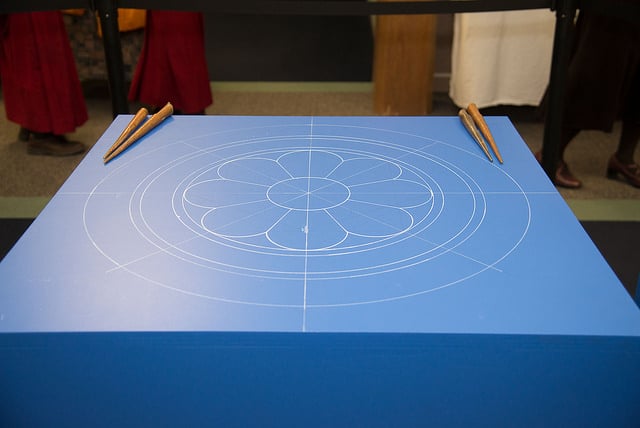
Working alone or in groups, the monks create intricate designs. Each mandala includes symbols that reflect Buddhist teachings or sometimes even the whole universe.
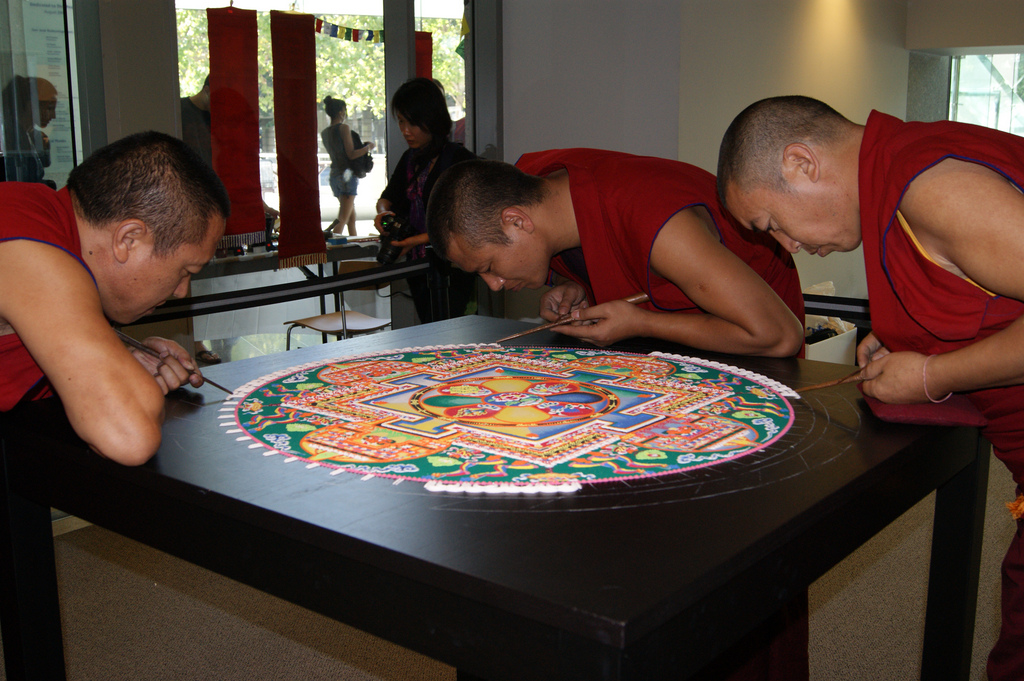
The traditional mandala-creating tool is called a chak-pur, and is a skinny funnel from which a controlled stream of sand can be poured.
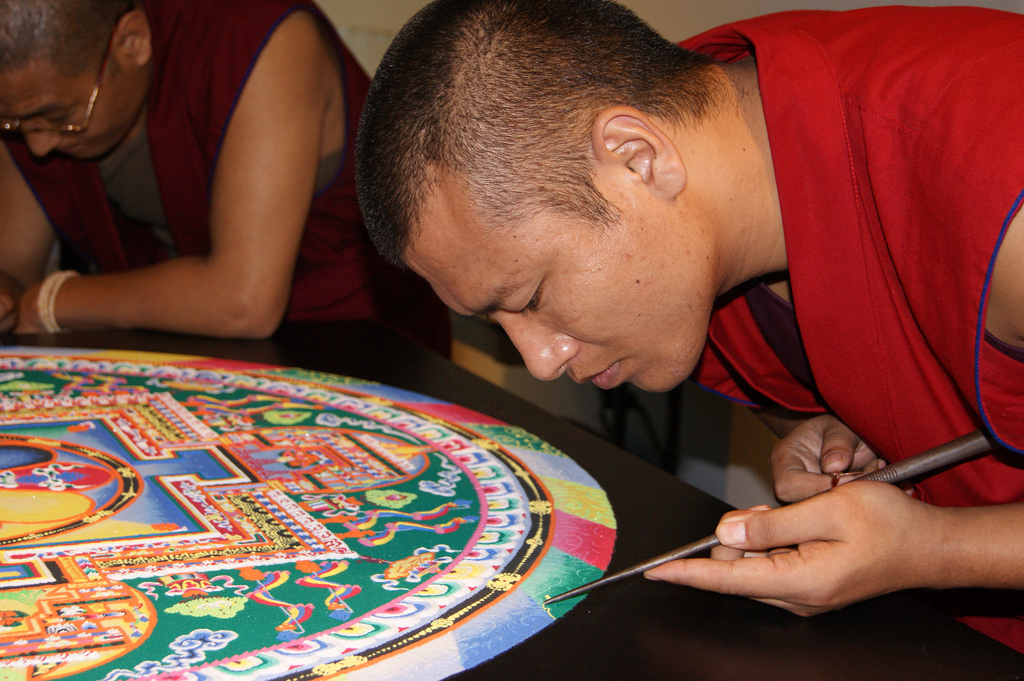
For the monks, creating the mandalas is a meditative process, helping them visualize Buddhist teachings.
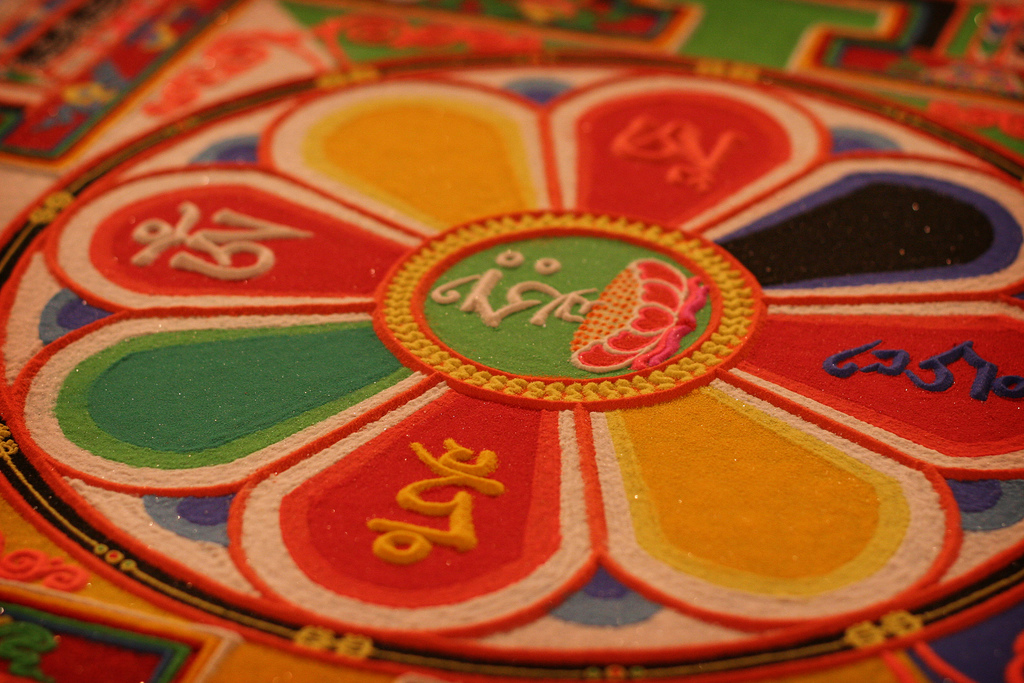
It not only takes physical discipline to create such precise details (like the tiny monkey), but also mental discipline to concentrate and reflect on the teachings.
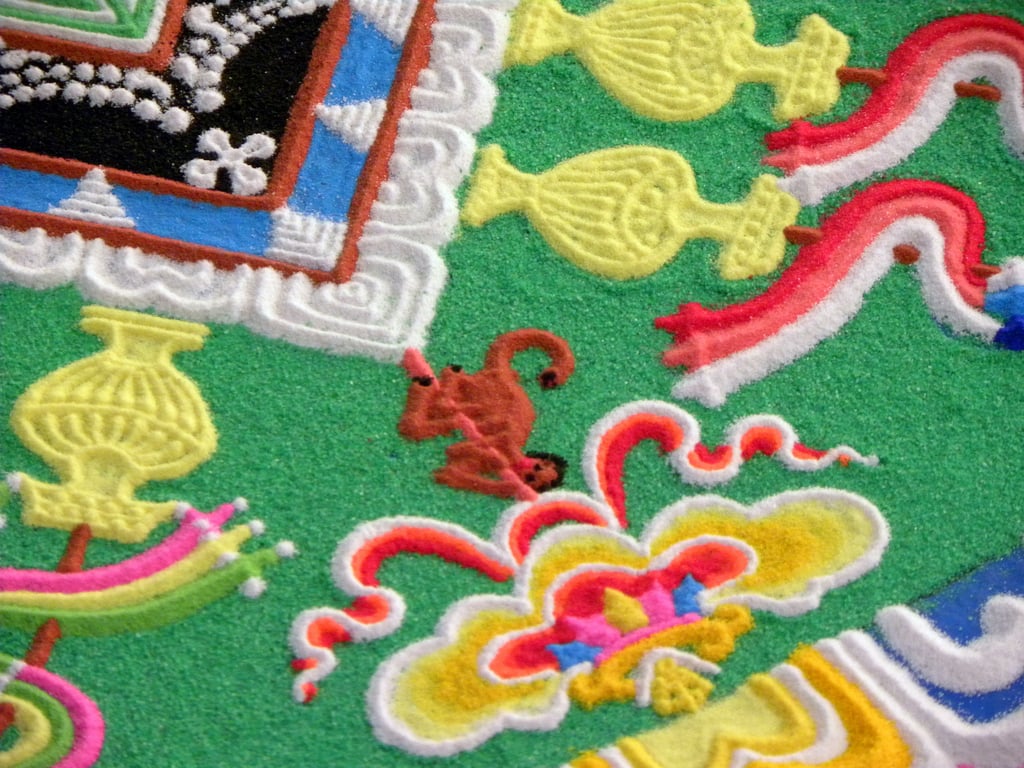
Creating a mandala requires diligent training in both manipulating the sand and quieting the mind enough to concentrate on it.
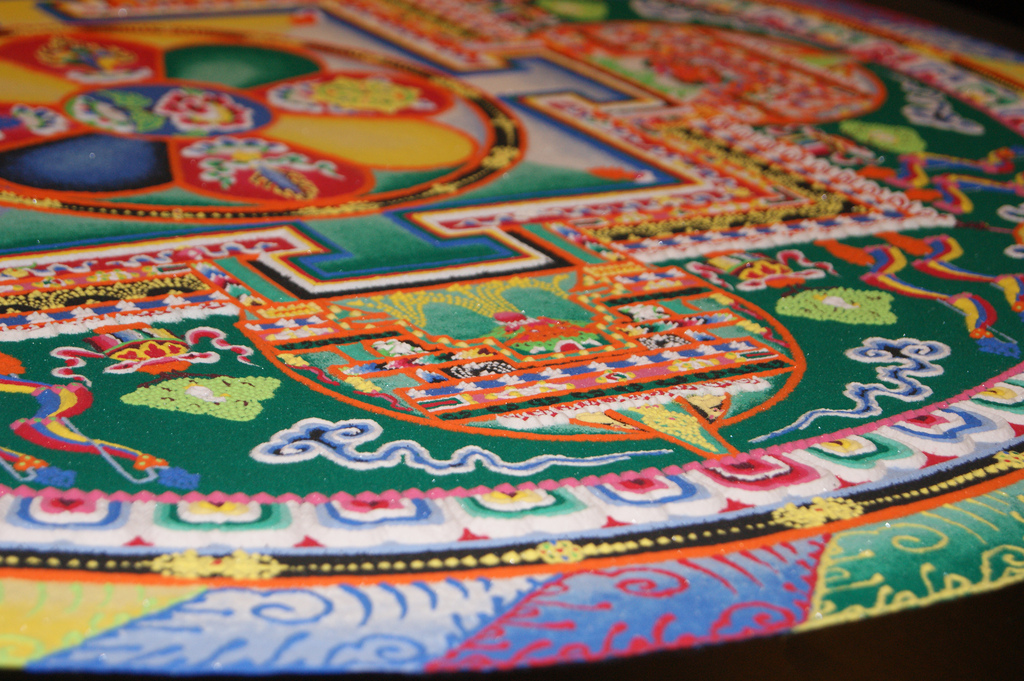
When the design is complete, the mandala is "closed." If you look carefully towards the left side of this photo, you can see where the design has been disturbed.
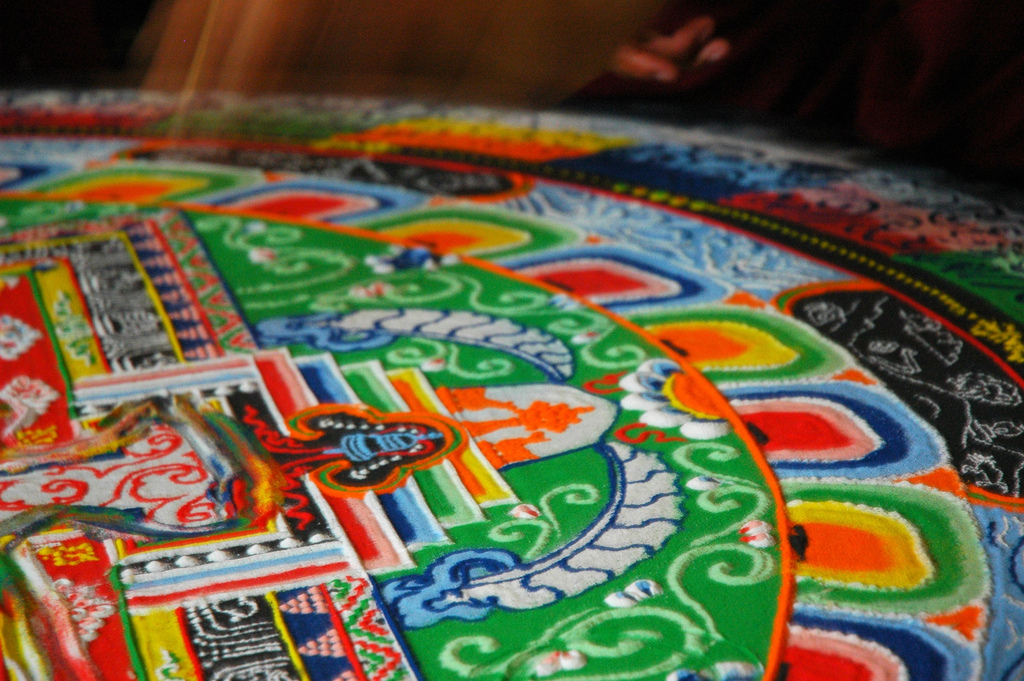
One of the major teachings in Buddhism is the impermanence of all things, and the mandalas are no exception. The ceremonial destruction is part of the mandala process.
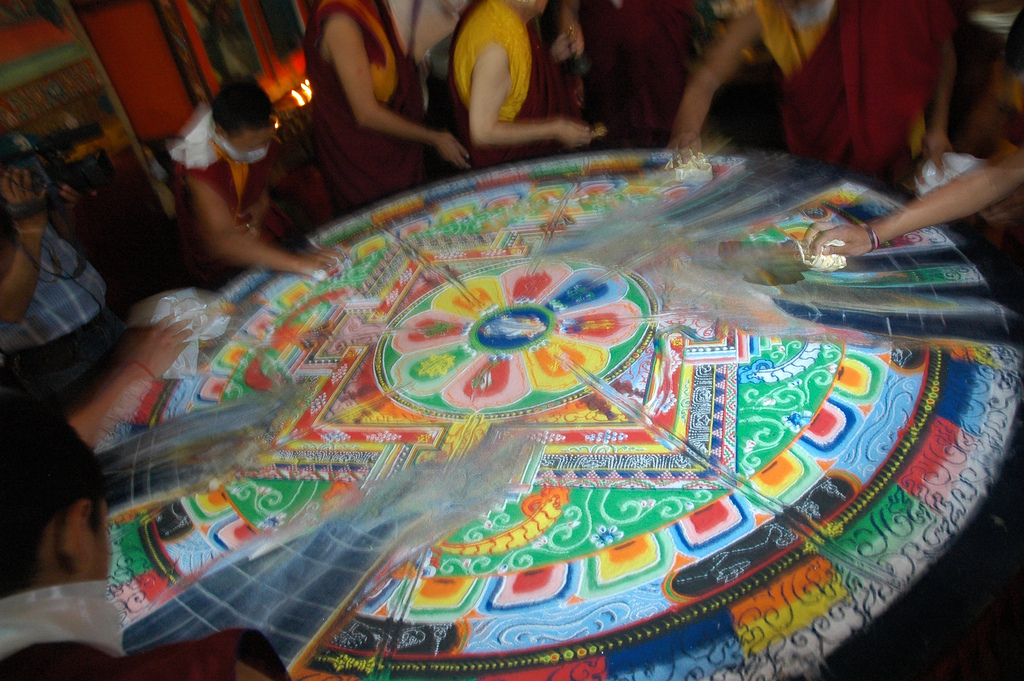
The sand is swept up into a pile and then poured into a body of running water. That way, it's believed, the blessings and teachings of the mandala can be spread throughout the world.
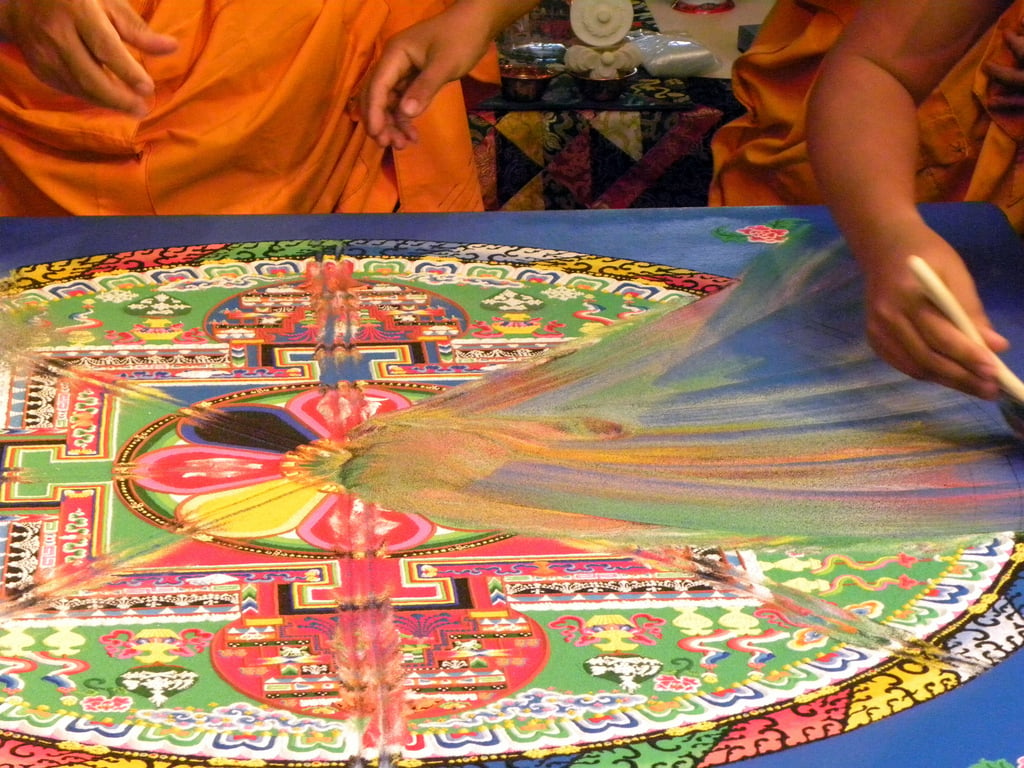
Watch the incredible process of creation and destruction in action here:
Of course, now that we have cameras in our pockets, these mandalas can stick around a bit longer.
But the lesson they teach us about allowing things to end and to not cling to things is as timeless as this beautiful tradition.
Pass on the beauty and the wisdom by SHARING.




